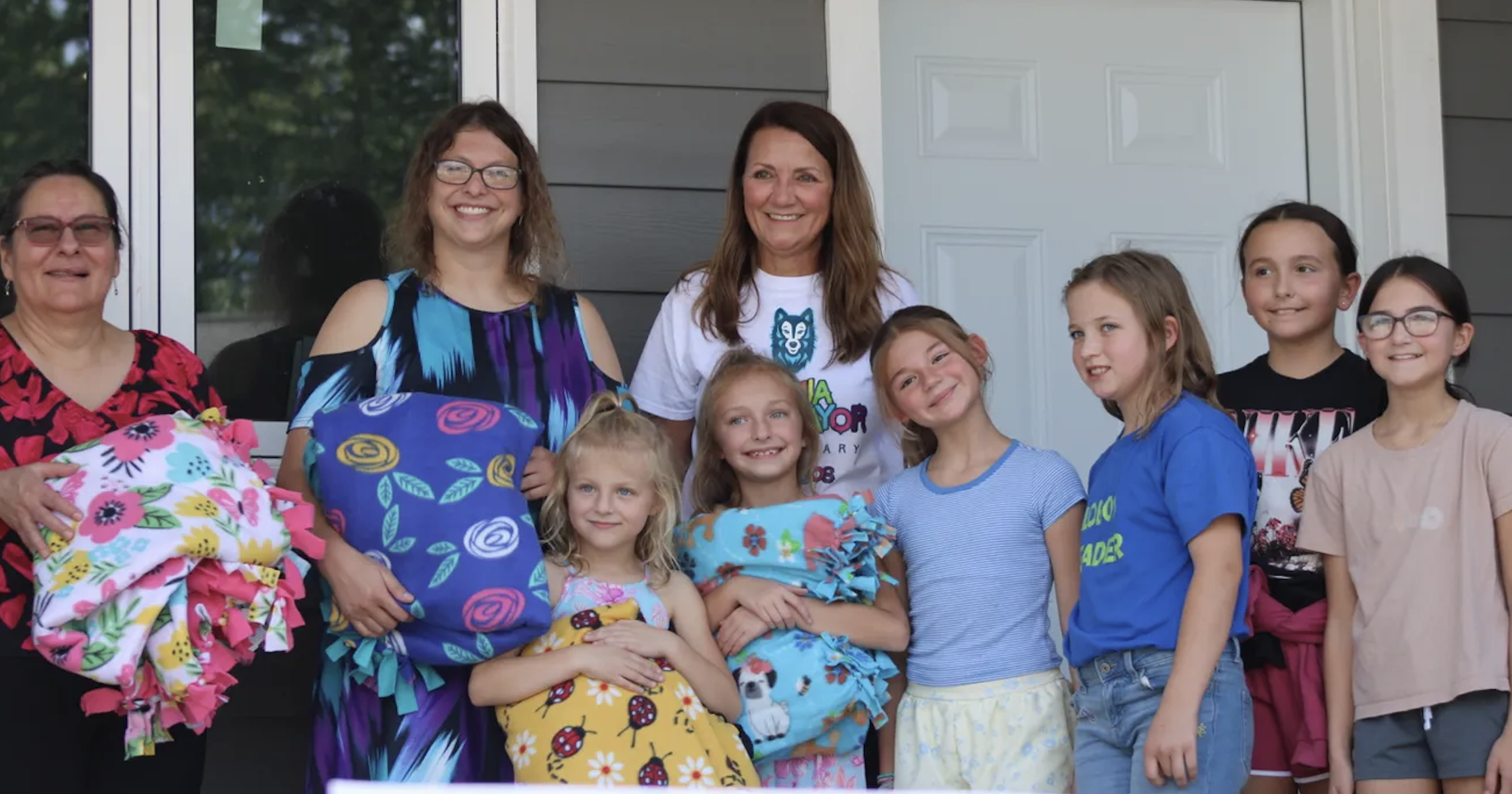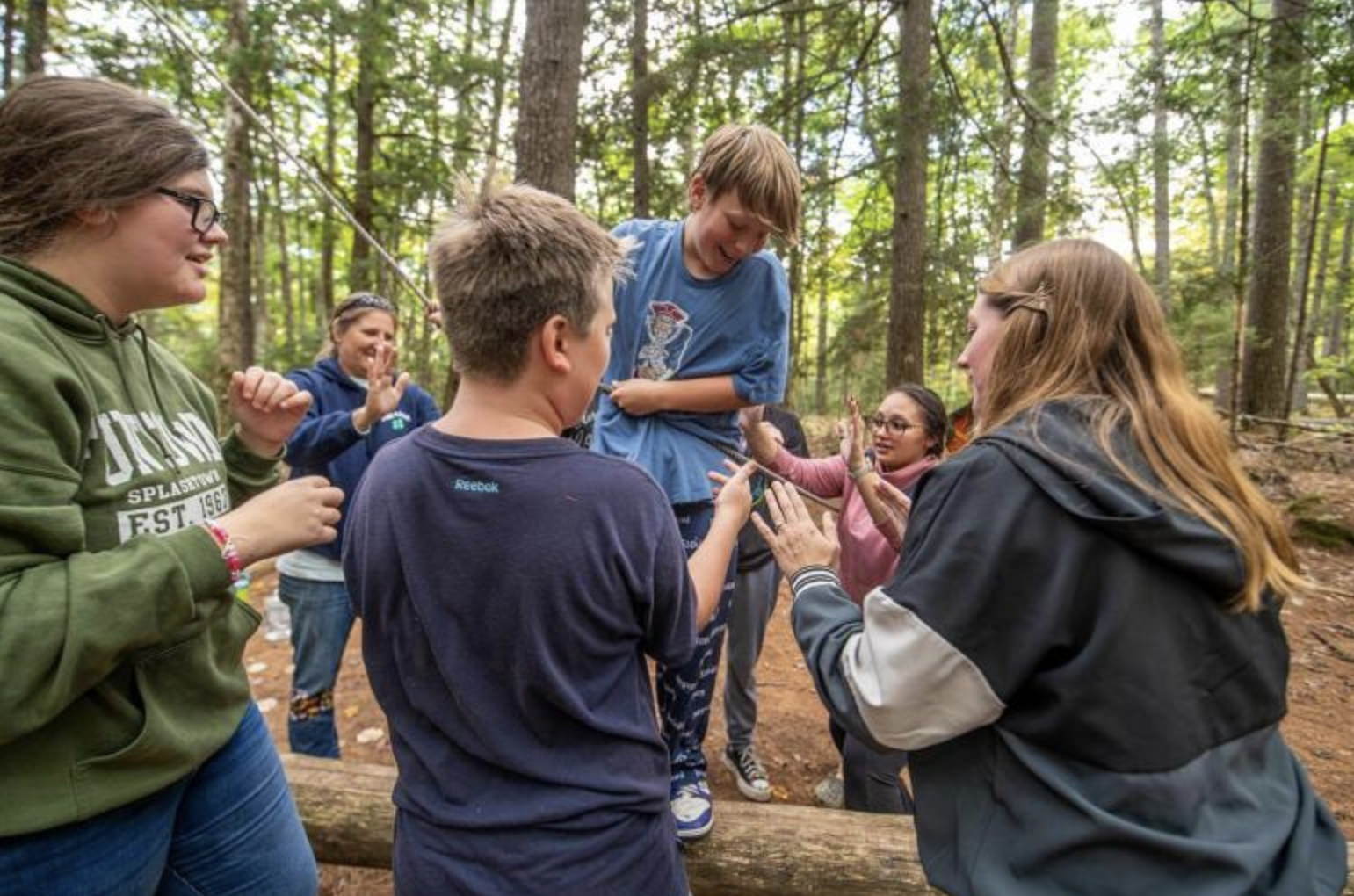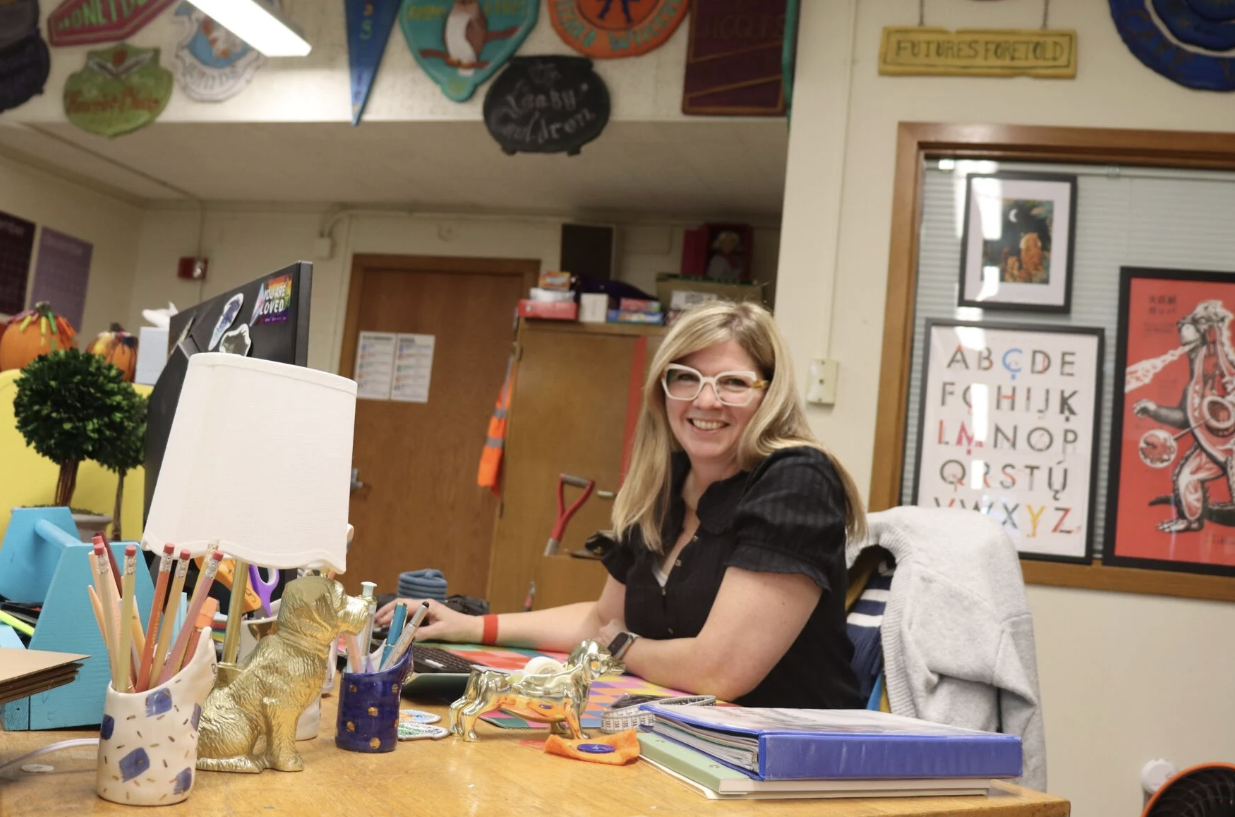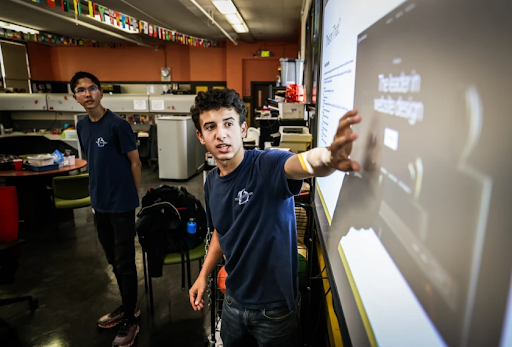Jump to: Top Tasks | From the Field | Key Resources | Moments of Resilience
It is week 156 of our new reality, and state legislative sessions are heating up across the country while advances in AI are upending how teachers teach and students learn around the world.
After years of hype and countless science-fiction movies, AI has finally arrived in the classroom.
“I don’t need to start this post with the usual predictions that AI will transform our classrooms. It is obviously happening,” writes Ethan Mollick, a professor at the Wharton School of Business, in a new article outlining his latest research on the best strategies for leveraging AI in teaching.
A recent Vox profile of Ethan and his wife Lilach gives a sense of what’s possible. “Neither Ethan Mollick nor Lilach, his equally AI obsessed research collaborator at Wharton and his spouse, are AI experts by background. Ethan researches and teaches entrepreneurship, while Lilach works on developing interactive simulations meant to help students try out scenarios like job interviews, elevator pitches to investors, running an early-stage startup, and more,” writes Dylan Matthews.
SUBSCRIBE
“With astonishing speed for non-specialists, they’re embracing generative AI and using it to remake their own jobs,” Matthews explains. “Beginning in December, Ethan used ChatGPT to devise a syllabus for an introductory course on entrepreneurship, come up with a final assignment, and develop a grading rubric for the final assignment. He used it to produce a test submission for the assignment and to grade that submission, using the rubric the AI had created previously.”
Lilach Mollick “was already on the more innovative end of what modern classrooms have to offer… She’s started playing around with having ChatGPT or Bing run the simulation: sending it a version of a sample pitch she wrote (pretending to be a student) and having it give feedback… according to a set rubric.”
Here at 50CAN, we’re also testing out new ways to use ChatGPT, including putting it through the paces as our editor for this week’s newsletter.
Last time, we put the spotlight on the Summer Boost learning initiative and shared promising work in supporting English language learners in Connecticut. This week, we take a closer look at the promise of AI with John Bailey and explore how the Land of Enchantment is leading the way forward on the science of reading.
TOP TASKS
Jump into the world of AI education
“This moment feels very different,” John Bailey–AEI senior fellow and advisor to CZI and WFF–shared with me in our recent conversation on AI and education. “The pace at which this is improving upon itself and also getting scaled across the ecosystem is just really–it’s unprecedented. It makes your head spin.”
It is natural to be skeptical and put the recent advances in this specific type of AI–called Large Language Models or LLMs–in the same category as numerous other technological advances that were overhyped in education but it would be a mistake to ignore this leap forward in AI because the changes it makes possible are nothing like what has come before.
“The only way to really understand this technology is to use it and to just keep playing with it,” John argues. Think of it as “twenty-two-year-old, fresh out of college … what would you ask them to help you with?” This new version of AI can help teachers with lesson planning, write first drafts of essays for students and create strategic plans for schools.
That does not mean, John stresses, it will get everything right on the first try: “Often what you would ask a teaching assistant to do, the 22-year-old would give you, it’s probably going to have errors in it too, so you always want to double check it.”
According to a new survey from the Walton Family Foundation, AI has already arrived in the classroom with teachers and students racing ahead while school policy struggles to catch up. The survey, conducted by RAND Corporation, interviewed 1,000 teachers and 2,000 students across 40 states and found that 40% of teachers and 33% of students already use one of the most popular forms of AI–OpenAI’s ChatGPT–at least once a week.
“I would say one of the things that was particularly concerning coming out of the Walton survey was that a large number of teachers were using it to grade students,” John cautioned, raising concerns both about accuracy of the systems right now and the privacy risks of uploading student homework.
The first step is for everyone involved in education to get smarter on these powerful new tools and that starts with more first-hand experience. This is a time of experimentation, innovation, learning and building. Here are a two ways to get started:
- Sign up for OpenAI’s ChatGPT. It’s free to use version 3 and $20 a month to upgrade to GPT Plus, which uses the more sophisticated version 4.
- Try out Microsoft’s Bing AI. You will need to join the waitlist and download Microsoft’s edge browser to unlock all the features but with a little effort you will get access to version 4 of the ChatGPT technology for free.
You can also learn more about what’s coming up, including Microsoft’s plans to include this AI technology in their Office suite, which will for example write drafts of essays for you inside Microsoft Word, and Google’s own soon to be released AI tool called Bard.
THE TASK OF THE WEEK IS
Champion the Science of Reading
One of the key priorities for Amanda Aragon, Executive Director of NewMexicoKidsCAN, is to improve elementary literacy outcomes for New Mexico students, who rank among the lowest in the nation on reading assessments. This year, she and her team have gone all in on this effort as champions of House Bill 481, which would amend New Mexico’s Reading Materials Fund to ensure that the state’s elementary literacy materials are fully aligned with the science of reading.
Representative T. Ryan Lane introduced House Bill 481 on February 16, and it was passed by both chambers of the legislature last week. The bill now heads to Governor Grisham’s desk, who is expected to sign it into law.
“We know that reading is foundational for academic success and lifelong learning,” Amanda said. “We owe it to our kids to provide them with the best tools and resources possible to help them become confident and proficient readers.”
Amanda isn’t the only local advocate in the 50CAN network leading the charge in bringing a more effective reading pedagogy to students. Last year, ConnCAN helped secure the passage of a bill that created an office of literacy research at the state level to analyze and approve reading curriculum based on the tenets of the science of reading. This year, the GeorgiaCAN team helped pass a bill out of the House that provides training and support for teachers on the science of reading while also ensuring every child in grades 1-3 receives screening for literacy challenges. That bill now moves to the Senate and will be considered tomorrow.
To learn more about the work of Amanda Aragon and NewMexicoKidsCAN, visit their website at nmkidscan.org or follow them on Twitter at @AmandaRAragon or @NMKidsCAN, and listen to her podcast, New Mexico Rising.
THE TASK OF THE WEEK IS
FROM THE FIELD
HawaiiKidsCAN hosted a Work-Based Learning event at the Hawaii State Capitol last Friday, that brought together legislators, students and community partners to examine the progress being made on students’ access to a meaningful career.
JerseyCAN worked behind the scenes with the administration on charter growth, resulting in Governor Murphy approving new charter school applications after rejecting them a year ago. The move will allow over 2,000 students, mostly in the state’s poorest districts, to attend charters.
NewMexicoKidsCAN saw the passage of HB130, which extends the length of the school day alongside instructional time requirements, in both chambers of the legislature. Assuming it is signed by the governor, the legislation will add 60 hours of instructional time to the school calendar.
50CAN President Derrell Bradford was featured in The Hill on the issue of religious charter schools in Oklahoma, arguing that the goal shouldn’t be to try to fit private religious schools into the constraints of the charter model but instead to find new ways to provide public funding for the type of education–district, charter, private or homeschooling–families think is best for their child.
50CAN National Voices Fellow Ray Ankrum was quoted in The 74 Million’s consideration of whether Rep. Hakeem Jeffries will continue his vocal support of charter schools now that he’s House Minority Leader.
Key Resources
FutureED published a national analysis of the wave of private school choice bills over the past two years, noting that lawmakers in 32 states have sponsored legislation to increase access to vouchers, scholarships or ESAs.
The National Alliance for Public Charter Schools launched a new podcast, “Get Schooled” featuring parents, educators and advocates who share their stories and experiences with charters.
New polling of Black parents from EdChoice is full of fascinating insights, including that 1 in 10 Black parents have their child enrolled in a microschool.
Education Reimagined’s Kelly Young highlights a data point in a wave of polling of parents: the desire for education to be centered on the student, with a majority of parents believing that student interests and passions should be core to their educational experience.
Reason examines the Wisconsin open enrollment system, finding that it can provide a replicable model for other states.
Brookings Institute looks at alternatives to a $60,000 baseline for teacher salaries, including differentiated pay that moves away from a step-and-lane approach and paying educators at the Master’s degree level without attainment of the degree.
The DC Policy Center released their State of DC Schools report for the 2021-2022 school year, finding that both student attendance and academic achievement declined, with schools operating with daily staffing shortages.
The Grade’s Alexander Russo highlights stories education journalists should be tracking, including a stalled recovery, with districts failing to catch kids up from pandemic-era learning loss.
Urban Institute examines housing discrimination beyond redlining, with a hard look at both Denver and Baltimore and how their populations and neighborhoods have changed over time.
Moment of Resilience
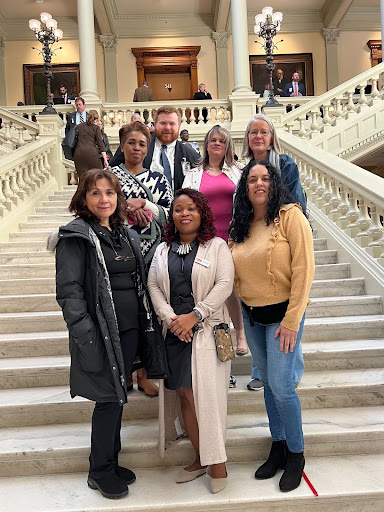
Steven Quinn, the National Organizing Manager for 50CAN, met with several of GeorgiaCAN’s parent-advocates at the Georgia Capitol to encourage legislators to vote for an expansion of ESAs throughout the state. SB233 was approved by the Senate earlier this month and is now being considered by the House Education subcommittee, which will hold a hearing on the bill later today. If the law is passed and signed by the Governor, it will provide a $6,000 ESA scholarship to every student attending a school that ranks in the bottom 25% of performance in the state.


